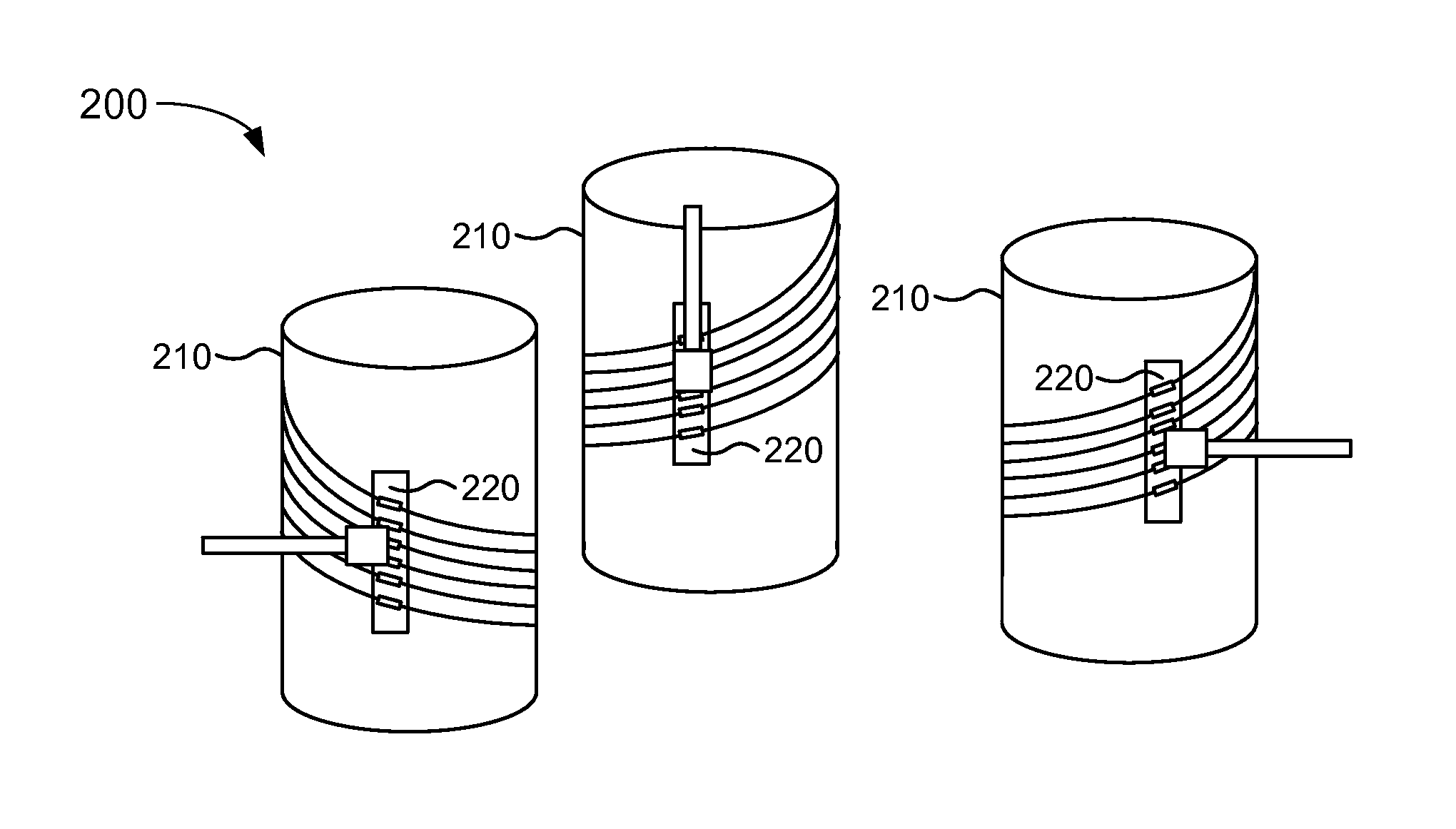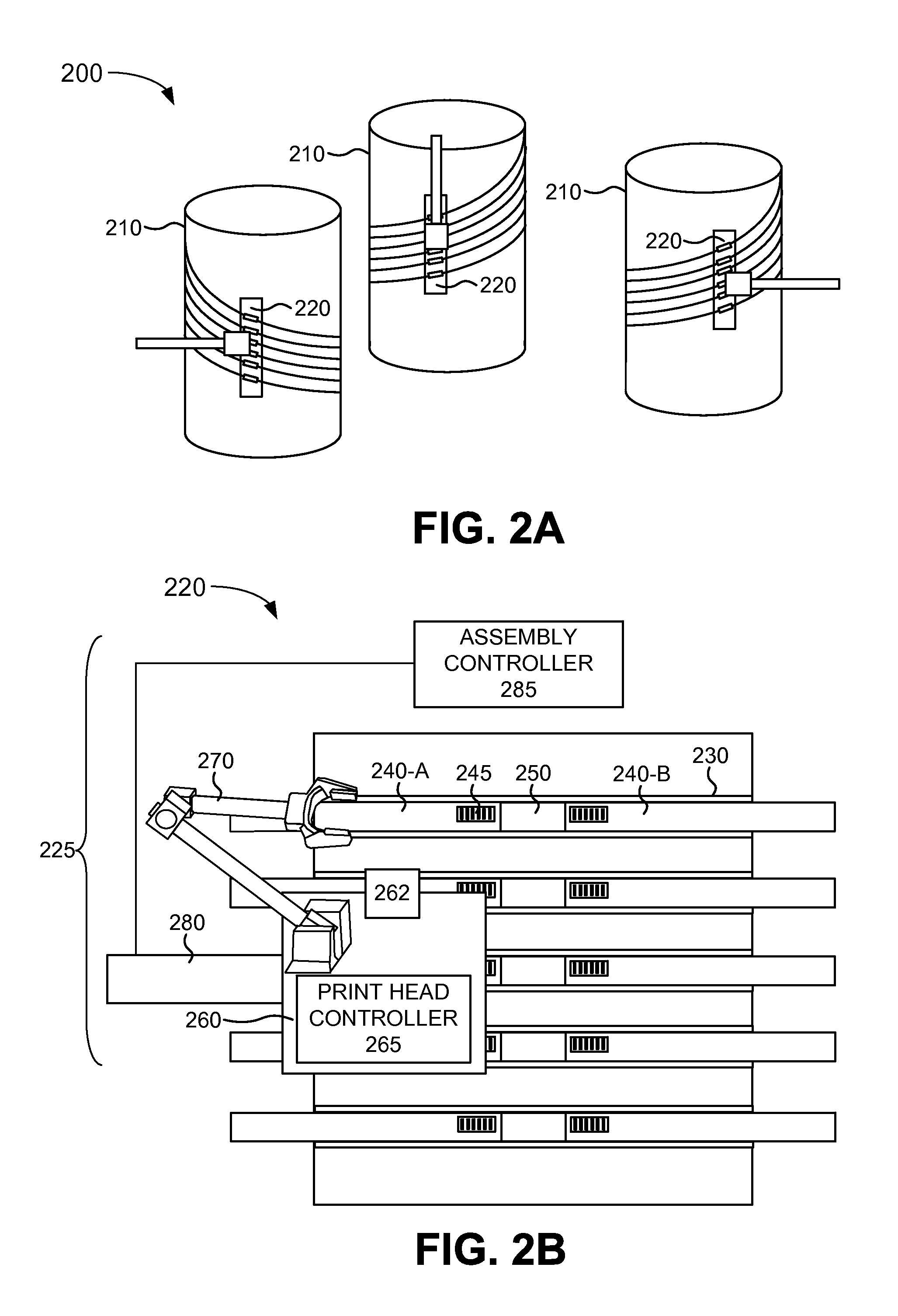Machine-to-machine plant automation using 3D printed fiber splicing
a technology of 3d printing and plant automation, applied in the direction of manufacturing tools, instruments, other domestic articles, etc., can solve the problems of expensive cleaning materials and receptacles, difficult patching of optical fibers, and large manual labor and training
- Summary
- Abstract
- Description
- Claims
- Application Information
AI Technical Summary
Benefits of technology
Problems solved by technology
Method used
Image
Examples
Embodiment Construction
[0017]The following detailed description refers to the accompanying drawings. The same reference numbers in different drawings identify the same or similar elements.
[0018]Implementations described herein relate to three dimensional (3D) printed splicing of optical fibers and to machine-to-machine plant automation using 3D printed optical fiber splicing. A fiber splicing machine may be used to align optical fibers for splicing and to clean the ends of the fibers in preparation for splicing. In some implementations, a pre-mold may be added to the junction site in order to speed up the splicing process. The fiber splicing machine may then use a print head with a silane material, such as a chlorinated polysilane material, to 3D print a silica junction between optical fibers to splice the optical fibers together. After the print head ejects beads or droplets of the silane material, the silane material may cure to a silica glass material. After the silica junction is printed, the print he...
PUM
| Property | Measurement | Unit |
|---|---|---|
| Refraction | aaaaa | aaaaa |
Abstract
Description
Claims
Application Information
 Login to View More
Login to View More - R&D
- Intellectual Property
- Life Sciences
- Materials
- Tech Scout
- Unparalleled Data Quality
- Higher Quality Content
- 60% Fewer Hallucinations
Browse by: Latest US Patents, China's latest patents, Technical Efficacy Thesaurus, Application Domain, Technology Topic, Popular Technical Reports.
© 2025 PatSnap. All rights reserved.Legal|Privacy policy|Modern Slavery Act Transparency Statement|Sitemap|About US| Contact US: help@patsnap.com



